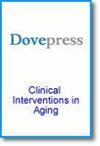肌肉超声在诊断老年人肌肉疏松症中的有效性:范围综述
IF 3.7
3区 医学
引用次数: 0
摘要
目的:肌肉超声已成为诊断肌肉疏松症的一种有效方法。本范围综述旨在根据最新的肌肉疏松症定义探讨肌肉超声在老年人中的有效性:我们遵循了范围界定审查的 PRISMA 指南。两位独立审稿人对数据库进行了系统检索。所有将超声波与国际公认的老年人(≥ 60 岁)肌肉疏松症定义的性能进行比较,且发表于 2019/01/01 (更新的肌肉疏松症定义出台的年份)至 2023/11/15 期间的文章均被纳入。数据按肌肉和肌肉参数进行提取和整理:结果:在筛选出的 2290 篇文章中,共纳入了 6 项研究,包括对 1619 名老年人(平均年龄 74.1 岁,52.2% 为女性)进行的 24 项有效性测试。有效性测试调查了股直肌(n = 7)、肱二头肌(n = 5)、腓肠肌内侧(n = 4)、胫骨前肌(n = 4)、比目鱼肌(n = 3)和腹直肌(n = 1)。最常测量的参数是肌肉厚度(MT)(14 人)。欧洲和亚洲最新的肌肉疏松症定义(EWGSOP2、AWGS2)分别在四次有效性测试中被用作参考标准。没有一项研究使用了 "肌肉疏松症定义与结果联盟"(SDOC)的标准。股直肌肌肉厚度的曲线下面积 AUC 最高(0.92,95% 置信区间 [CI] 0.89-0.94)。由于各研究之间存在很大的异质性,因此无法使用荟萃分析方法汇总数据:结论:根据最新定义,对肌肉超声诊断老年人肌肉疏松症有效性的研究数量有限。因此,股直肌的肌肉厚度显示出了良好的有效性。关键词:老年评估、肌肉厚度、横截面积、股直肌、POCUS、SARCUS、EWGSOP、AWGS、SDOC本文章由计算机程序翻译,如有差异,请以英文原文为准。
The Validity of Muscle Ultrasound in the Diagnostic Workup of Sarcopenia Among Older Adults: A Scoping Review
Purpose: Muscle ultrasound has emerged as a promising method in the diagnostic work-up of sarcopenia. The objective of this scoping review was to explore the validity of muscle ultrasound against the latest sarcopenia definitions among older adults.
Methods: We adhered to the PRISMA guidelines for scoping reviews. A systematic search of databases was performed by two independent reviewers. All articles comparing the performance of ultrasound to an internationally acknowledged sarcopenia definition among older adults (≥ 60 years) and published between 2019/01/01 (the year updated sarcopenia definitions were introduced) and 2023/11/15 were included. Data were extracted and collated by muscle and muscle parameters.
Results: Out of 2290 articles screened, six studies comprising 24 validity tests among a total of 1619 older adults (mean age 74.1 years, 52.2% female) were included. The validity tests investigated the rectus femoris (n = 7), biceps brachii (n = 5), gastrocnemius medialis (n = 4), tibialis anterior (n = 4), soleus (n = 3), and rectus abdominis (n = 1). The parameter muscle thickness (MT) (n = 14) was most commonly measured. The latest European and Asian sarcopenia definitions (EWGSOP2, AWGS2) were applied as reference standards in four validity tests each. None of the studies used the Sarcopenia Definition and Outcome Consortium (SDOC) criteria. The highest area under the curve AUC (0.92, 95% confidence interval [CI] 0.89– 0.94) was found for the muscle thickness of the rectus femoris muscle. Due to substantial heterogeneity among the studies, pooling of data using a meta-analytic approach was not feasible.
Conclusion: Limited number of studies have examined the validity of muscle ultrasound for diagnosing sarcopenia based on recent definitions among older adults. Thereby, muscle thickness of the rectus femoris showed promising results regarding validity. Further studies are needed to investigate the validity of key muscles and to validate muscle ultrasound among older hospitalized patients.
Keywords: geriatric assessment, muscle thickness, cross-sectional area, rectus femoris, POCUS, SARCUS, EWGSOP, AWGS, SDOC
Methods: We adhered to the PRISMA guidelines for scoping reviews. A systematic search of databases was performed by two independent reviewers. All articles comparing the performance of ultrasound to an internationally acknowledged sarcopenia definition among older adults (≥ 60 years) and published between 2019/01/01 (the year updated sarcopenia definitions were introduced) and 2023/11/15 were included. Data were extracted and collated by muscle and muscle parameters.
Results: Out of 2290 articles screened, six studies comprising 24 validity tests among a total of 1619 older adults (mean age 74.1 years, 52.2% female) were included. The validity tests investigated the rectus femoris (n = 7), biceps brachii (n = 5), gastrocnemius medialis (n = 4), tibialis anterior (n = 4), soleus (n = 3), and rectus abdominis (n = 1). The parameter muscle thickness (MT) (n = 14) was most commonly measured. The latest European and Asian sarcopenia definitions (EWGSOP2, AWGS2) were applied as reference standards in four validity tests each. None of the studies used the Sarcopenia Definition and Outcome Consortium (SDOC) criteria. The highest area under the curve AUC (0.92, 95% confidence interval [CI] 0.89– 0.94) was found for the muscle thickness of the rectus femoris muscle. Due to substantial heterogeneity among the studies, pooling of data using a meta-analytic approach was not feasible.
Conclusion: Limited number of studies have examined the validity of muscle ultrasound for diagnosing sarcopenia based on recent definitions among older adults. Thereby, muscle thickness of the rectus femoris showed promising results regarding validity. Further studies are needed to investigate the validity of key muscles and to validate muscle ultrasound among older hospitalized patients.
Keywords: geriatric assessment, muscle thickness, cross-sectional area, rectus femoris, POCUS, SARCUS, EWGSOP, AWGS, SDOC
求助全文
通过发布文献求助,成功后即可免费获取论文全文。
去求助
来源期刊

Clinical Interventions in Aging
GERIATRICS & GERONTOLOGY-
CiteScore
6.20
自引率
2.80%
发文量
193
期刊介绍:
Clinical Interventions in Aging, is an online, peer reviewed, open access journal focusing on concise rapid reporting of original research and reviews in aging. Special attention will be given to papers reporting on actual or potential clinical applications leading to improved prevention or treatment of disease or a greater understanding of pathological processes that result from maladaptive changes in the body associated with aging. This journal is directed at a wide array of scientists, engineers, pharmacists, pharmacologists and clinical specialists wishing to maintain an up to date knowledge of this exciting and emerging field.
 求助内容:
求助内容: 应助结果提醒方式:
应助结果提醒方式:


